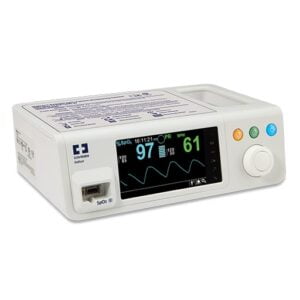An Integrated Strategy for Managing Seizures and Ensuring Safety During Sleep

 Managing seizures related to epilepsy and ensuring safety during sleep is a critical concern for individuals with seizure disorders and their caregivers. Night time seizures can pose significant risks, including suffocation, falls, and injury. Developing a comprehensive safety strategy can provide peace of mind and improve the quality of life for those affected. This post outlines essential steps to create a robust safety plan for managing seizures and ensuring safety during sleep.
Managing seizures related to epilepsy and ensuring safety during sleep is a critical concern for individuals with seizure disorders and their caregivers. Night time seizures can pose significant risks, including suffocation, falls, and injury. Developing a comprehensive safety strategy can provide peace of mind and improve the quality of life for those affected. This post outlines essential steps to create a robust safety plan for managing seizures and ensuring safety during sleep.
Understanding the Risks
Nighttime seizures, also known as nocturnal seizures, occur during sleep and can lead to dangerous situations. Common risks include:
Suffocation: The person may end up in a position that obstructs their airway.
Falls: Seizures can cause the person to fall out of bed.
Injury: Seizures can result in hitting the head or other parts of the body against hard surfaces.
Sudden Unexpected Death in Epilepsy (SUDEP): Although rare, SUDEP is a serious risk where a person with epilepsy dies unexpectedly without a clear cause.
Key Components of a Comprehensive Safety Strategy for Managing Seizures
Medical Management
Regular Medical Consultation: Ensure regular check-ups with a neurologist or epilepsy specialist. Adjust medications as needed to control seizures effectively.
Medication Adherence: Strictly follow prescribed medication regimens to minimize seizure occurrences.
Awareness of Triggers: Identify and avoid seizure triggers, such as sleep deprivation, stress, and certain foods or activities.
Seizure Monitoring
Wearable Seizure Monitors: Devices like the Night Watch can detect seizure activity and alert caregivers in real-time.
Bed and Room Sensors: Systems like the SAMi-3 Sleep Activity Monitor can monitor movements and sounds during sleep, providing alerts for potential seizures.
Video Surveillance: Installing a camera with night vision like the SAMi-3 Sleep Activity Monitor in the bedroom can help caregivers monitor the child’s activity and respond quickly to seizures.
Creating a Safe Sleep Environment
Anti-Suffocation Pillows: Use specially designed pillows that allow for airflow, reducing the risk of suffocation.
Bed Safety: Place the bed against a wall to prevent falls. Use bed rails or a low bed to minimize fall risks.
Soft Bedding: Use soft, breathable bedding materials to prevent injuries during seizures. Avoid heavy blankets and pillows that could obstruct breathing.
Room Layout: Remove sharp objects and hard furniture edges near the bed. Ensure there is enough space around the bed to prevent injury if the person falls out.
Emergency Preparedness
Seizure Response Plan: Develop a clear plan for what to do during a seizure. Ensure all family members and caregivers are familiar with it.
Medical Alert System: Consider using a medical alert system that can quickly connect to emergency services if a seizure occurs.
First Aid Training: Caregivers should be trained in seizure first aid, including how to handle prolonged seizures and when to seek emergency help.
Lifestyle and Behavioural Adjustments
Consistent Sleep Schedule: Encourage a regular sleep routine to reduce the risk of seizures triggered by sleep deprivation.
Healthy Diet and Exercise: Maintain a balanced diet and regular physical activity to support overall health and potentially reduce seizure frequency.
Stress Management: Implement stress-reduction techniques such as mindfulness, relaxation exercises, and counselling if needed.
Support Network
Family and Friends: Ensure that close family and friends are aware of the condition and know how to respond to seizures.
Support Groups: Join epilepsy support groups to share experiences and gain advice from others facing similar challenges.
Educational Resources: Stay informed about the latest research and developments in epilepsy management through reputable sources and organizations.
Creating a comprehensive safety strategy for managing seizures and ensuring safety during sleep involves a multi-faceted approach. By combining medical management, effective monitoring, a safe sleep environment, emergency preparedness, lifestyle adjustments, and a strong support network, individuals with epilepsy can significantly reduce risks and improve their quality of life. Collaboration with healthcare providers, staying informed, and proactive planning are key to navigating the challenges of epilepsy and ensuring the safety and well-being of those affected.
SleepSure Epilepsy Pillow
The most “Breathable” Epilepsy Pillow available
The SleepSure pillow is designed to prioritize safety by utilizing highly breathable, hypoallergenic materials. SleepSure has also implemented rigorous testing and quality control measures to ensure compliance with safety standards and is now the only anti-suffocation pillow registered with the TGA as a class one medical device, providing peace of mind to users and their families.
Nellcor Oxiband Foam Sensor Wraps Replacements – Adult / Infant (pack of 100)
Nellcor Velcro Wrap for attachment of Adult Reusable Sensor OXI-P/I and D-YS.
Suitable for Adults (Over 40kg – Finger) and Infants (under 3kg – Toe)
Nellcor Oxiband Foam Sensor Wraps Replacement – Peadiatric (pack of 100)
Nellcor Velcro Wrap for attachment of Adult Reusable Sensor OXI-P/I and D-YS.
Suitable for Pediatric patients (Between 3kg – 40 kg)
Nellcor Oxiband Velcro Sensor Wraps Replacement – One Size (pack of 12)
Nellcor Velcro Wrap for attachment of Adult Reusable Sensor OXI-P/I and D-YS.
Suitable for all patients
Medtronic Nellcor PULSE OXIMETER WITH 1 REUSABLE SENSOR PM100N
The Nellcor™ bedside SpO2 patient monitoring system, PM100N, provides at-a-glance access to real-time patient respiratory status information including continuous SpO2 and pulse rate monitoring and trending data.
Nellcor Oxiband Reusable Oxygen Sensor – Adult / Neonatal
OxiMax Oxiband Sensor is a reusable sensor to determine oxygen saturation and pulse rate.
Nellcor Oxiband Adhesive Sensor Wraps Replacement – Peadiatric (pack of 100)
Nellcor Adhesive Wrap for attachment of Adult Reusable Sensor OXI-P/I and D-YS.
Suitable for Pediatric patients (Between 3kg – 40 kg)
Nellcor ADH Oxiband Adhesive Sensor Wraps Replacement – Adult / Infant (pack of 100)
Nellcor Adhesive Wrap is for the attachment of Adult Reusable Sensor OXI-A/N and D-YS.
Suitable for Adults (Over 40kg – Finger) and Infants (under 3kg – Toe)
Nightwatch Replacement Armband (Per Metre)
Replacement armband for Nightwatch seizure monitor, sold by the metre. Nightwatch seizure monitor not included.









